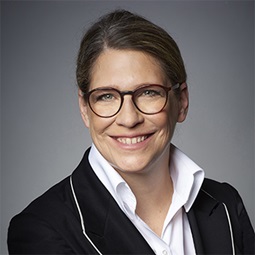Contributed by Andrea Saavedra
Yet another decision has come out of the Madoff liquidation proceedings – this time, however, it wasn’t in favor of Irving Picard, the court-appointed trustee, and it has caused quite a bit of a buzz because of its potential to put the “kibosh” on a number of the Trustee’s avoidance actions against customers of the now-defunct Madoff Securities investment firm.
In Picard v. Katz, 11-cv-03605-JSR, slip op. (S.D.N.Y. Sept. 27, 2011), the United States District Court for the Southern District of New York dismissed all but two claims of an almost 400-page complaint brought by the Trustee against certain Madoff customers. The complaint sought to recover over a billion dollars from the defendants pursuant to federal and state law avoidance statutes based on theories of preference, actual fraud, and constructive fraud. In their motion to dismiss, the defendants argued that, with the exception of the Trustee’s actual fraud claims, the complaint was entirely barred by one of the “safe harbor” provisions of the Bankruptcy Code. Specifically, section 546(e) provides, in relevant part, that, notwithstanding the various avoidance powers of a bankruptcy trustee:
[T]he trustee may not avoid a transfer that is a . . . settlement payment . . . made by or to (or for the benefit of) a . . . stockbroker . . . or that is a transfer made by or to (or for the benefit of) a stockbroker in connection with a securities contract . . . that is made before the commencement of the case, except under section 548 (a)(1)(A) of this title.
Section 548(a)(1)(A), in turn, provides that a trustee:
may avoid a transfer of an interest of the debtor in property . . . that was made or incurred on or within 2 years before the date of the filing of the petition, if the debtor voluntarily or involuntarily—
(A) made such transfer or incurred such obligation with actual intent to hinder, delay, or defraud any entity to which the debtor was or became, on or after the date that such transfer was made or such obligation was incurred, indebted[.]
The defendants argued that, because all payments made to them by Madoff Securities were “settlement payments” made by a “stockbroker,” the plain meaning of section 546(e), read in conjunction with section 548(a)(1)(A), required dismissal of the Trustee’s preference and constructive fraud claims. Given the Second Circuit Court of Appeals’ recent decision interpreting the meaning of section 546(e) in Enron Creditors Recovery Corp. v. Alfa, S.A.B. de C.V. (In re Enron), –F.3d–, 2011 WL 2536101 (2d Cir. June 28, 2011) (previously reported about here) and based on its own analysis of the statute, the court agreed with the defendants and held that section 546(e) protected payments received by a customer from a stockbroker, except in instances of actual fraud.
Having dismissed the preference and constructive fraud claims, the court turned its attention to the Trustee’s claims for actual fraud. Because it was “patent” that all of the transfers made by Madoff Securities during the two-year period preceding its bankruptcy filing were made with the actual intent to defraud present and future creditors, the court explained that the issue before it wasn’t whether the transfers to these customers could be avoided, but rather to what extent. Resolution of this issue, the court explained, turned on its application of the good-faith transferee defense enunciated in section 548(c) of the Bankruptcy Code, which provides, in relevant part, that:
[A] transferee or obligee of [an avoidable transfer or obligation of the debtor] that takes for value and in good faith has a lien on or may retain any interest transferred or may enforce any obligation incurred, as the case may be, to the extent that such transferee or obligee gave value to the debtor in exchange for such transfer or obligation
Thus, to the extent that a customer, in good faith, gave value to Madoff Securities in exchange for the transfers it received, it could be protected by the provisions of section 548(c). From the court’s perspective, the availability of the defense turned on whether the monies that the Trustee sought to recover were either the customers’ principal or profits.
Concluding that it was “clear that the principal invested by any of Madoff’s customers ‘gave value to the debtor,’” the court held that principal could not be subject to recovery absent a showing of bad faith on the part of the customer. To plead the customers’ bad faith, or lack of “good faith,” the Trustee had propounded two theories in his complaint: first, that the customers received the funds “willfully blind” of the underlying fraudulent scheme (i.e., that they ignored certain “red flags” so as to secure short-term profit) or, in the alternative, that the defendants were on “inquiry notice” of the fraud but failed to diligently investigate Madoff Securities. The court explained that the difference between the two approaches was, essentially, “the difference between an objective” (inquiry notice) versus a “subjective” (willful blindness) standard. Although an objective standard is often used in other bankruptcy contexts, given the standards implemented in securities law, the court reasoned that the subjective standard was more appropriate. Thus, the Trustee could only recover the defendants’ return of principal by showing an absence of good faith on defendants’ part based on their willful blindness.
In contrast, the court concluded that profits are likely subject to recovery by the Trustee because they are presumptively in excess of any value (principal) provided by the customer, irrespective of a customer’s good (or bad) faith. Thus, the only manner in which a defendant could preserve its profits is if it were able to show that it provided value in excess of its principal investment, a fact that the court found highly unlikely to exist. Lastly, because the Trustee had adequately alleged that the defendants did not receive the fraudulent transfers in good faith, the court did not dismiss the Trustee’s request to equitably subordinate the customers’ claims in the liquidation proceedings.
The decision, another landmark in the Madoff cases, reaffirms the applicability of the safe harbor provisions of the Bankruptcy Code within the context of stockbroker liquidations and how such provisions can limit the avoidance powers of a bankruptcy trustee when, as the Second Circuit Court of Appeals said in its Enron decision, “two important national legislative policies” – that of bankruptcy and securities law – are on a “collision course.”















